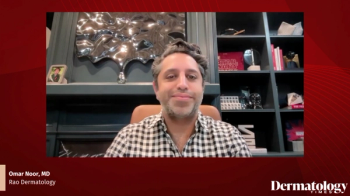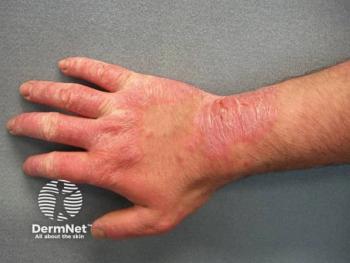
Addressing Overlapping Pathophysiology and Patient Burden in Atopic Dermatitis and Alopecia Areata
Key Takeaways
- A patient-centered approach is crucial for managing AD and AA, considering disease burden beyond visible symptoms.
- Clinical overlap between AD and AA necessitates inquiry into scalp involvement and hair changes in AD patients.
At RAD 2025, Tiffany Mayo, MD, emphasized the need for clinicians to recognize shared inflammatory mechanisms between AD and AA.
“Even though I've been to several meetings over the past month, being at this meeting talking specifically about atopic dermatitis, the treatments for atopic dermatitis, the different phenotypes, and patient populations all in one, really helps us start to understand who we should be selecting for certain treatments. Things we should be considering for our different patient populations to make sure we're actually managing and counseling them adequately,” said Tiffany Mayo, MD, in an interview with Dermatology Times.
Mayo, associate professor of dermatology and director of the Clinical Research Unit at the University of Alabama at Birmingham, presented complex atopic dermatitis (AD) and alopecia areata (AA) cases at the
Mayo first highlighted that the severity of AA should not be assessed solely by the extent of visible hair loss. Even limited areas of involvement, such as the scalp, can cause severe pruritus and sleep disturbance, underscoring the importance of evaluating the impact on quality of life. She urged clinicians to recognize that “small” presentations of disease can carry outsized consequences and should be managed accordingly.
Importantly, Mayo noted the clinical overlap between AA and AD2, encouraging clinicians to inquire about scalp involvement and hair changes in their AD patients, even when AA is not present. She described a spectrum of hair and scalp issues associated with AD that are often underappreciated and may have a significant psychosocial impact. She emphasized the value of communicating to patients that effective AD control may also contribute to improvement in alopecia symptoms.
Mayo also discussed the current therapeutic landscape, noting the growing array of options for AD. She stressed that as understanding of treatment mechanisms evolves, so too does insight into disease pathophysiology. Dedicated conferences like RAD provide an opportunity to refine phenotype-based treatment selection and tailor approaches across diverse patient populations.
Beyond AD and AA, Mayo expressed her enthusiasm for treating scarring alopecia and hidradenitis suppurativa, advocating for more research in these underexplored conditions. She is actively involved in community outreach and quality improvement projects aimed at enhancing disease awareness, especially in skin of color populations, where nuanced presentations of inflammatory dermatoses are often underrecognized.
Lastly, Mayo expressed hope that future AD and alopecia research will continue to clarify overlapping pathways and identify therapies with dual benefits across complex inflammatory diseases.
References
- Mayo T. Complex cases: AD & hair loss. Presented at: 2025 Revolutionizing Atopic Dermatitis; June 6-7, 2025; Nashville, TN.
- Stevanovic K, Pereira M, Nguyen O, van Hofman I, Meesch C, Zuberbier T. 20 years of the socioeconomic impact of atopic dermatitis and alopecia areata from around the globe. Clin Transl Allergy. 2025 May;15(5):e70061. doi: 10.1002/clt2.70061
Newsletter
Like what you’re reading? Subscribe to Dermatology Times for weekly updates on therapies, innovations, and real-world practice tips.



















